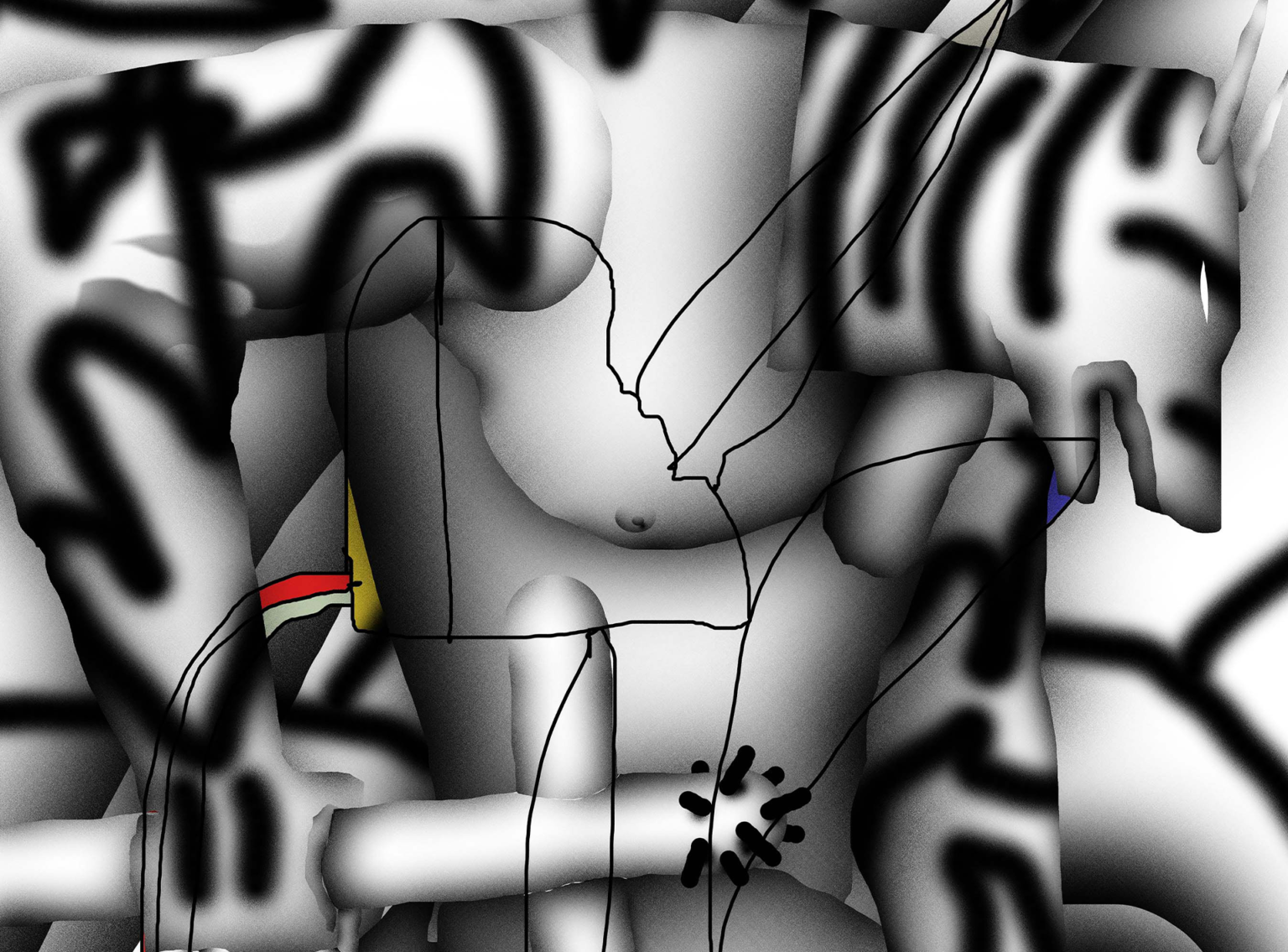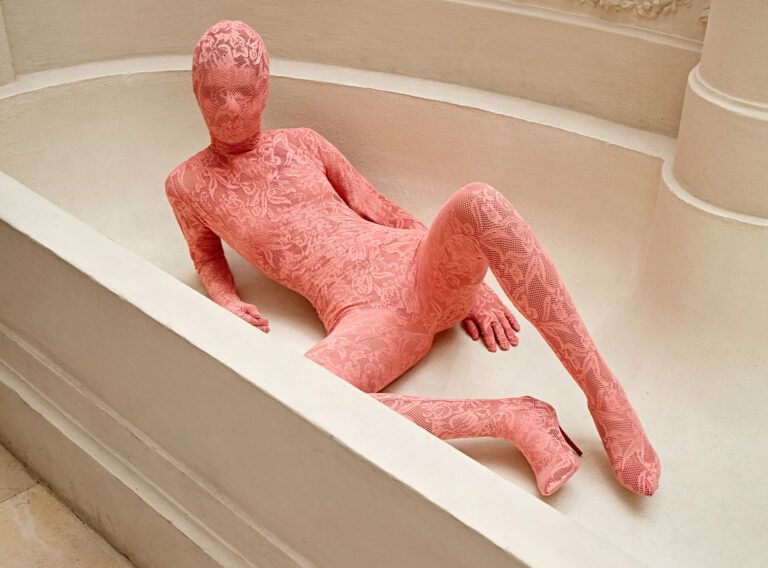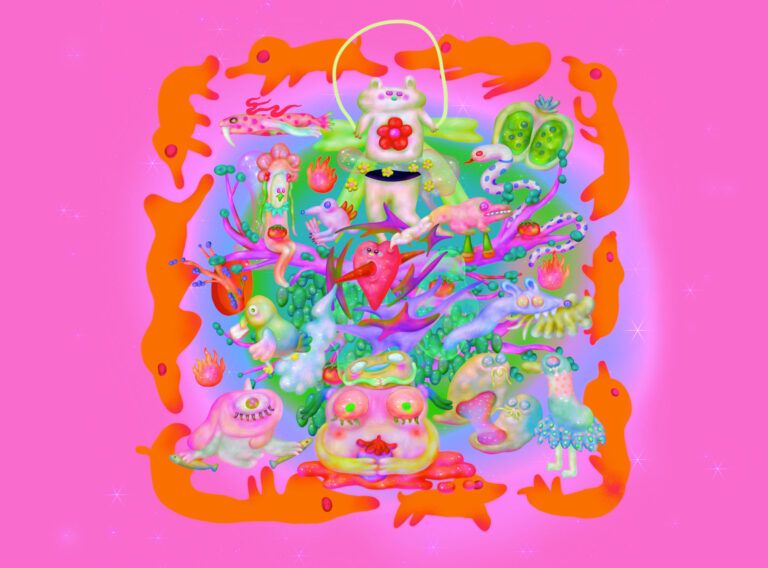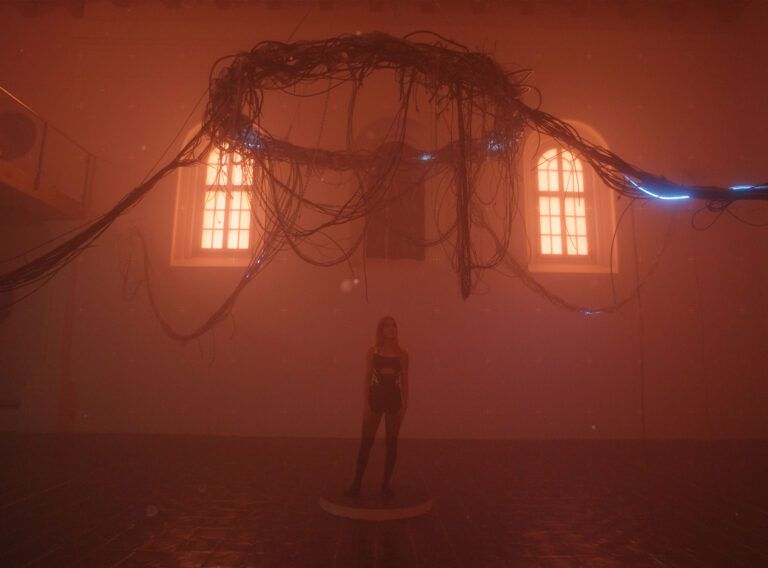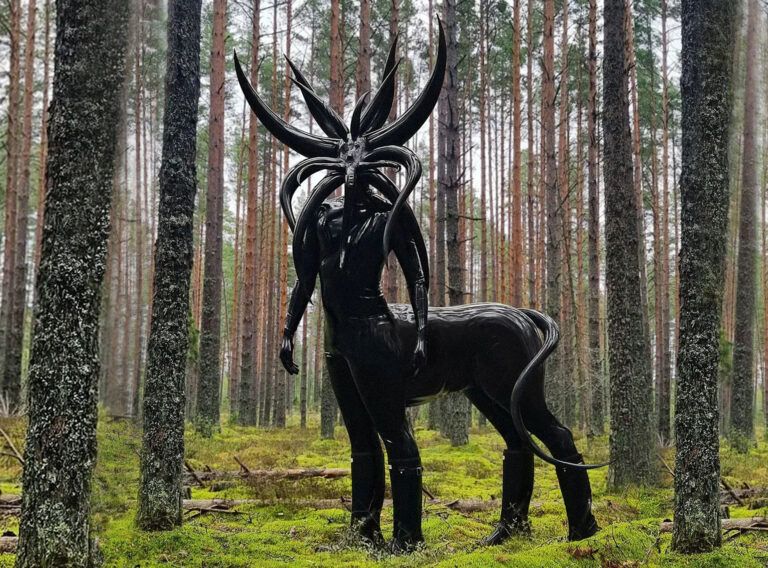How are is your place of origin and its history reflected in your work?
My birthplace, Kyrgyzstan, has always been multicultural, with many nationalities living in a relatively small area. This naturally leads to a mixture of both historical heritage and traditions and customs. I’m not sure if it is reflected in my work. But I know that it gave me a certain overview and understanding of other mentalities, mostly the eastern one.


Where do you get the inspiration for your artworks?
I was inspired by the impressionists who began to turn away from a traditional style and academic norms. My work is influenced by sculpture, ancient artwork, prehistoric caves paintings, folk craft, old cartoons and, last but not least, contemporary popular culture.

How do you define your style and what technique/s do you use the most often?
I like it minimalist. There is usually a figure in an indeterminate abstract arrangement. I dare say that I am already beginning to recognize a certain style in my work. I often start creating sketches in Photoshop. I like working digitally, because you can start with a shape and transform it completely, or simply manipulate it with multiple layers. I will share some of these pieces in their original form as digital sketches, but sometimes I project them into templates and transform them using spray paint on paper. Other works are combinations of spray paint and acrylic colors on canvas. I also use other media such as collages, photography, or video. I never liked photorealistic paintings. I’ve always preferred imperfect images. When I need to create something that looks like reality, I simply take a camera and take a picture or create it in 3D.


Do you feel the new coming of the medieval (in the way of its aesthetics or ideology, philosophy)?
I would say mostly its aesthetics. But it is also interesting how society was, in a sense, superstitious and naïve. That can be seen even today.

What is your prediction for the next years in the art world as if you were a “fortune-teller?” (talking about style, technologies, materials, or ideology.)
In my opinion, the future is already happening. This was especially noticeable last year. Many exhibitions could be visited virtually. Nevertheless, I am convinced that for the time being, nothing compares to seeing a certain painting, sculpture, installation or performance with one’s own eyes.


If you could pick one medieval weapon, which would it be and why? (it can also be spell.)
I would choose a bow. As a boy, I made my own. With archery, I enjoy the concentration of mind and body before the shot. It’s almost meditative. And I would also like to be a successful alchemist so that I can turn things into gold. 🙂

Is there any theme, tale or story that repeatedly appears in your artwork?
They are mostly scenes without specific stories. Sometimes there appears something like a relationship between two individuals.


Will you release any new projects this year?
Right now, I am still creating monochrome paintings on paper. I am also working on several projects that I can’t talk about yet. You can find out about new projects on my Instagram.


BIO
Alexey Shahov was born in Kyrgyzstan in 1986. He and his family emigrated to the Czech Republic when he was 12, and he currently lives and works in Prague. Apart from being self-educated, he has higher education in art. Artworks nbr. 4-9 were presented at the 2020 “LUSTR” illustration festival.

CREDITS
Artworks / Alexey Shahov @alexeyshahov_
Interview / Markéta Kosinová @__maarketa__


